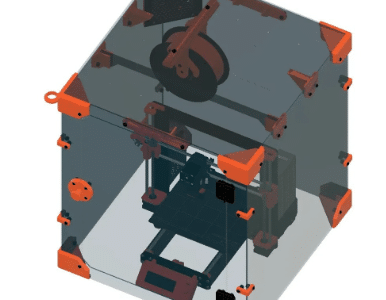
Introduction:
Workday stands at the forefront of cloud-based enterprise solutions, revolutionizing how organizations manage their HR, finance, and operational tasks. Its architecture embodies a sophisticated blend of cutting-edge technology and adaptable frameworks. With a unified data model, scalable infrastructure, and customizable workflows, Workday offers a seamless, secure, and intuitive platform. This transformative software suite empowers businesses to streamline processes, enhance efficiency, and make data-driven decisions.
Understanding the architecture is key to unlocking the potential of Workday’s comprehensive functionalities for modern organizations. Therefore, professionals can join the Workday Course to learn more about this platform and its architecture for more efficiency.
Workday Architecture:
The Workday platform is a robust and versatile cloud-based software suite designed to streamline various HR, finance, and operational processes within organizations. Moreover, Its architecture is pivotal to its functionality, ensuring scalability, security, and seamless operations.
Let us delve into the key components and layers that constitute the Workday architecture.
Core Components:
- Cloud Infrastructure: Workday operates on a multi-tenant cloud infrastructure. This means multiple customers share the same infrastructure while their data remains logically separate and secure. Furthermore, this setup enables scalability, flexibility, and accessibility from anywhere with an internet connection.
- Data Model: Workday utilizes a single, unified data model. Moreover, this cohesive structure integrates HR, finance, and other operational data, ensuring consistency and coherence across various processes. This unified model simplifies reporting, analytics, and data-driven decision-making.
- Business Process Framework: Workday’s architecture is based on a robust business process framework. It allows organizations to configure workflows, approvals, and business rules tailored to their specific needs. Moreover, this flexibility ensures adaptability to evolving business requirements without extensive custom coding.
Workday Architecture Layers:
Presentation Layer:
This layer includes the user interface accessible through web browsers or mobile devices. Moreover, it provides an intuitive and user-friendly experience for interacting with Workday functionalities, supporting various devices and browsers.
Integration Layer:
The integration layer facilitates seamless communication between Workday and other external systems, such as third-party applications or legacy systems. Moreover, It employs web services, APIs, and tools like Workday Studio to enable data exchange and interoperability.
Application Layer:
At the core of Workday’s architecture lies the application layer. Moreover, it hosts the suite’s primary functionalities for HR, finance, payroll, and other organizational processes. These applications are built using Workday’s proprietary development tools.
Database Layer:
Workday’s database layer manages and stores the unified data model. Moreover, It ensures data integrity, security, and scalability while enabling fast and reliable access to information across the platform.
Reporting and Analytics Layer:
Workday provides robust reporting and analytics capabilities to help organizations gain insights into their data. This layer includes tools for creating and customizing reports, dashboards, and analytics to support informed decision-making.
Security Layer:
- Workday places a strong emphasis on security, and the security layer is responsible for enforcing access controls, authentication, and data protection.
- It includes features such as role-based access controls, encryption, and other security measures to safeguard sensitive information.
Key Characteristics Of Workday Architecture:
Let us look at the key characteristics of Workday’s architecture.
Security and Compliance:
Workday prioritizes data security and compliance with industry standards. It employs robust encryption, access controls, and continuous monitoring to safeguard sensitive information. Regular audits ensure adherence to regulations like GDPR and SOC certifications.
Scalability and Performance:
The architecture is designed to scale seamlessly as organizations grow. The cloud infrastructure, coupled with a scalable database model, allows for efficient handling of increasing data volumes while maintaining optimal performance.
Customization and Extensibility:
Workday offers extensive customization options through its configurable framework. Organizations can tailor workflows, reports, and data fields to suit their unique requirements without extensive coding.
Upgrades and Maintenance:
Workday manages upgrades and maintenance centrally, relieving organizations of these tasks. Furthermore, it regular updates and enhancements are deployed to all users, ensuring access to the latest features and improvements without disrupting operations.
Cloud-Based:
- It is a Software as a Service (SaaS) solution, meaning it is hosted in the cloud and accessed by users over the internet.
- The cloud-based architecture allows for easy scalability, and accessibility, and eliminates the need for on-premises installations and maintenance.
Object-Oriented Data Model:
Workday uses an object-oriented data model, which means that data is stored in the form of objects. Objects encapsulate both data and the processes that operate on the data. For example, an employee might be represented as an object that includes information about the person as well as processes related to HR functions.
Unified Database:
- Workday uses a single, unified database for all of its applications. This ensures consistency and real-time access to data across different modules (HCM, finance, etc.).
- The unified database allows for a seamless flow of information between different functional areas.
Mobile-First Design:
- Workday has a mobile-first design philosophy, ensuring that its applications are accessible and optimized for use on mobile devices.
- This design approach supports a modern, flexible work environment where users can access information from anywhere.
Integration Framework:
- Workday provides an integration framework that allows seamless connectivity with other third-party applications and services.
- Integration capabilities enable organizations to connect Workday with existing systems and tools to ensure a holistic and cohesive IT environment.
User-Friendly Interface:
- Workday features an intuitive and user-friendly interface designed to enhance the user experience.
- The interface is consistent across different modules, making it easier for users to navigate and perform tasks.
Conclusion:
In summary, Workday’s architecture is a sophisticated blend of a unified data model, scalable cloud infrastructure, configurable workflows, and stringent security measures. Workday offers numerous key characteristics that make it an ideal choice for many professionals. Furthermore, it offers scalability and optimum performance and facilitates customizations for users. It even offers a mobile design that supports a modern and flexible work environment. Along with it, Workday has a user-friendly interface which makes it easier for newcomers to navigate and complete tasks. The Workday HCM Online Training provides comprehensive training sessions to help aspiring professionals learn the functionalities of Workday better. Moreover, Workday aims to provide organizations with a versatile, user-friendly platform that adapts to their evolving needs while ensuring data integrity and compliance.



